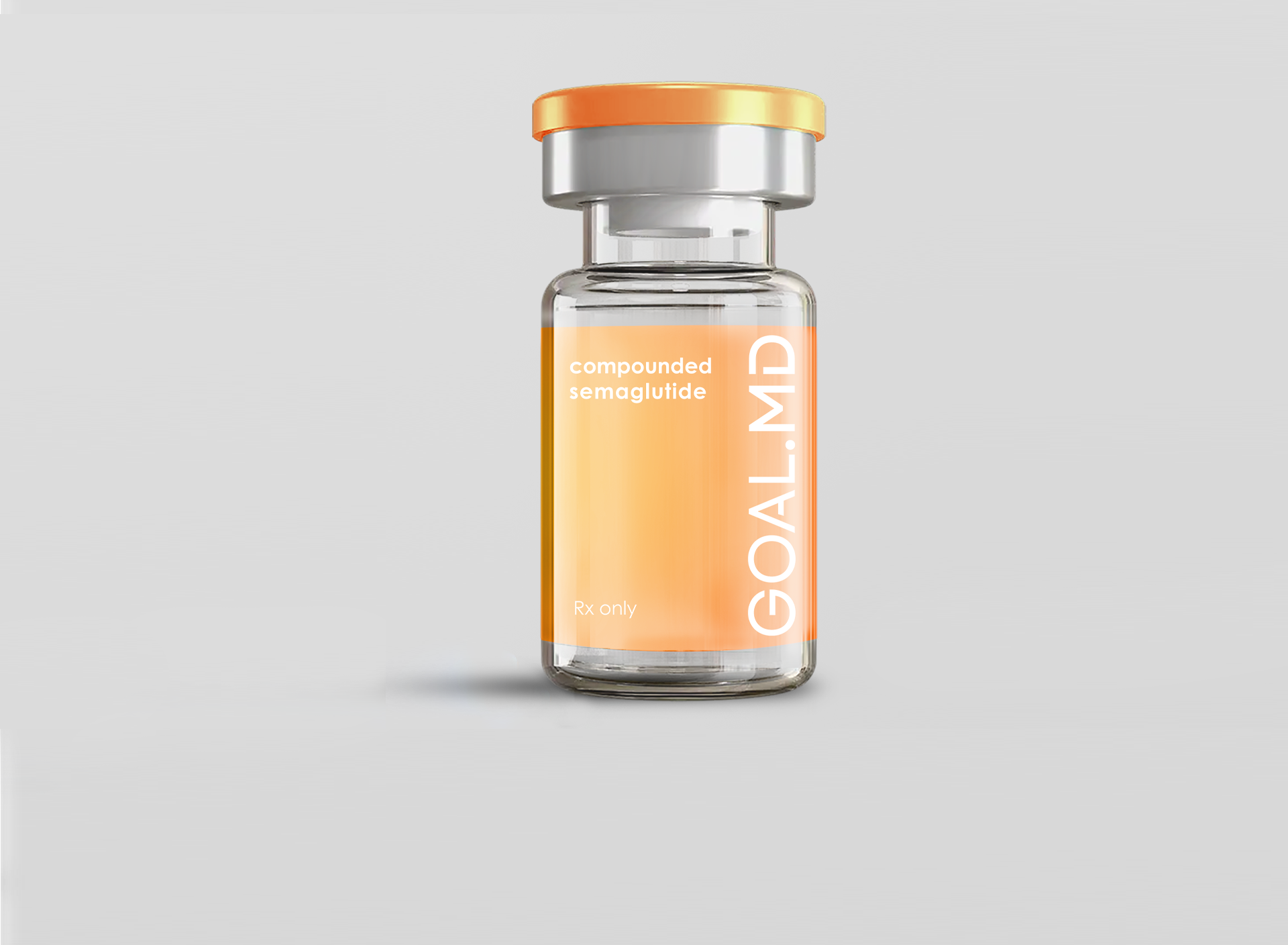
GOAL.MD Health & Wellness Blog
Evidence-based insights, medical weight loss information, and practical tips from our physicians and healthcare experts.

How Long Does GLP-1's Stay in Your Body? Duration, Factors, and What to Expect
How Long Does GLP-1 Stay in Your Body? Duration, Factors, and What to Expect
April 26, 2025
GLP-1 Education
11 min read
Wondering how long GLP-1 stays in your system? This guide breaks down its half-life, what influences its duration, and how to navigate side effects and success with this powerful GLP-1 medication.
Key Takeaways
GLP-1 hormones help to regulate appetite, insulin, and digestion.
It has an approximate half-life of 7 days, which supports once-weekly dosing.
Full elimination may take up to 8-10 weeks after your final dose.
Factors like kidney and liver function, BMI, and metabolic rate influence how long it stays in your system.
GLP-1s should be taken under medical supervision, ideally as part of a weight management plan.
Success depends on consistency, monitoring, and combining with lifestyle shifts.
What Is GLP-1 and How Does It Work?
GLP-1 is a GLP-1 receptor agonist that helps regulate blood sugar and support weight loss by mimicking a naturally occurring gut hormone (GLP-1). It's approved under brand names like Ozempic® and Wegovy®.
Mechanisms of Action:
Increases insulin secretion (glucose-dependent)
Suppresses glucagon production (reduces glucose output)
Slows gastric emptying, promoting longer-lasting fullness
Reduces appetite and food cravings
Many patients experience appetite suppression within the first few days, with significant results after 4-8 weeks. However, the full effects on weight loss and blood sugar may take longer.
Factors That Affect How Long GLP-1 Stays in Your System
GLP1 duration in your body can be impacted by several personal health and lifestyle factors:
1. Kidney Function
The kidneys help eliminate GLP-1'S. If kidney function is impaired, the drug may stay in the system longer. Renal monitoring is crucial, especially if you experience dehydration from side effects like vomiting or diarrhea.
2. Liver Function
People with liver issues may process it more slowly, increasing its half-life and potential for buildup.
3. Body Weight and BMI
Heavier individuals or those with higher fat percentages tend to have extended drug duration.GLP-1's may remain in fat tissues longer, which slows clearance.
4. Metabolic Rate
If your metabolism is slower (due to age, genetics, or hormonal conditions), GLP-1s may linger longer. Those with faster metabolisms may eliminate it slightly quicker.
Understanding these factors helps your provider adjust dosing and expectations for your results.
GLP-1's Half-Life and Dosing Timeline
The average half-life of GLP-1's is 168 hours (7 days), which allows for its once-weekly dosing schedule.
Dosing progression generally follows this pattern:
Week 1-4: 0.25 mg once weekly (starter dose)
Week 5-8: 0.5 mg once weekly
Week 9+: 1 mg to 2 mg weekly, depending on your response
Because of its long half-life:
Effects begin within days, but maximum results take weeks to months
After your last dose, GLP-1's can remain in your system for 5-7 weeks
A full washout may require 8-10 weeks for complete elimination
This extended presence supports long-lasting appetite control, even after pausing medication.
How Long Do the Effects of GLP-1's Last?
Short-Term (First 1-3 Months)
Appetite suppression typically begins in the first week
Food cravings diminish
Blood sugar improvements begin to show within 2-4 weeks
Medium-Term (3-6 Months)
Weight loss often becomes visible
Many patients lose 5-10% of body weight
Stomach empties more slowly, reducing overeating urges
Long-Term (6+ Months)
A1C and fasting glucose levels stabilize
Weight plateaus or continues downward gradually
Behavioral changes become easier to maintain
Most clinical studies recommend 12-24 months of treatment for sustained outcomes.
Monitoring GLP-1'S in Your Body
Because GLP1 stays active for weeks, it’s important to monitor your health during treatment:
Track blood sugar and A1C levels regularly
Watch for side effects, especially GI symptoms (nausea, constipation, reflux)
Stay hydrated, especially if you're vomiting or experiencing diarrhea
Report any unusual symptoms to your provider (e.g. blurry vision, neck swelling, difficulty swallowing)
In some cases, your provider may recommend blood panels to monitor kidney, liver, thyroid, and B12 levels.
Interactions That Affect GLP-1's Duration
GLP-1's can interact with:
Insulin or sulfonylureas – Can increase the risk of low blood sugar
Beta-blockers, MAO inhibitors, SSRIs – May intensify hypoglycemic effects
Oral medications – Because GLP-1 slows digestion, it may delay how other meds are absorbed
Herbal supplements – Especially chromium, alpha-lipoic acid, or others that affect glucose
Always discuss your full medication and supplement list with your provider to avoid unintended effects.
When Will GLP-1's Leave Your System?
After your final dose:
You may still feel the effects for 5-7 weeks
Complete elimination may take 8-10 weeks, depending on your dose, metabolism, and health status
That means if you stop taking it, you should continue monitoring your body closely for rebound hunger, glucose changes, and side effects tapering off.
Looking to Start or Adjust Your GLP-1's Plan?
Physician-guided, GLP-1's
Affordable pricing starting at $297/month
Personalized plans and ongoing clinical support
💊 View current dosing and pricing
We don’t just prescribe—we partner with you to manage your journey.
Final Thoughts
GLP-1's don’t just change your hunger—it changes your rhythm. Its long half-life allows for sustained appetite regulation and weight loss, but it must be part of a lifestyle-based plan.
Talk to your healthcare provider about the duration that’s right for you, and how to monitor and maintain results long-term.
✨ Start your custom GLP-1 plan today →
Disclaimer: The FDA does not approve compounded medications for safety, quality, or manufacturing. A prescription and medical evaluation are required for certain products. This article is for informational purposes only and not medical advice. Always consult a licensed provider before starting or adjusting any medication.
Why GOAL.MD?
✅ Sourced from audited 503a US compounding pharmacies.
✅ Custom dosages adjusted to your needs.
✅ Free consultation + 24/7 support.

How It Works
1. Quiz
90 seconds. No commitment.
2. Consult
Video chat with your GOAL.MD doctor.
3. Deliver
Meds at your door tomorrow.
Transform Your Life with Physician-Directed Care
Join thousands who've found success with physician-directed care. Take our 3-minute quiz to see if medical weight loss is right for you.








